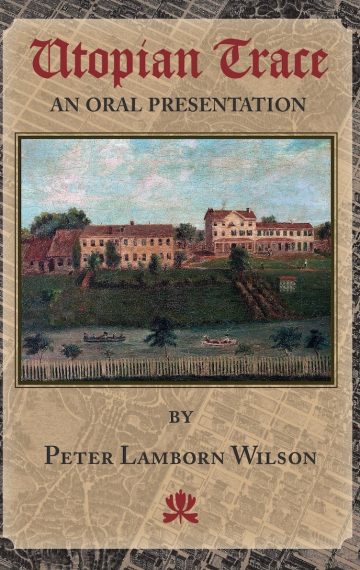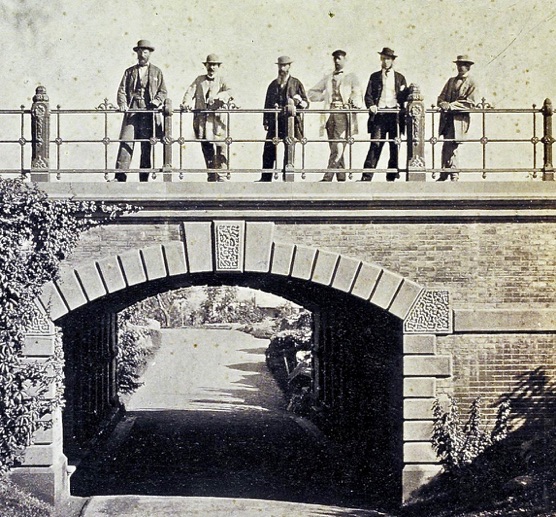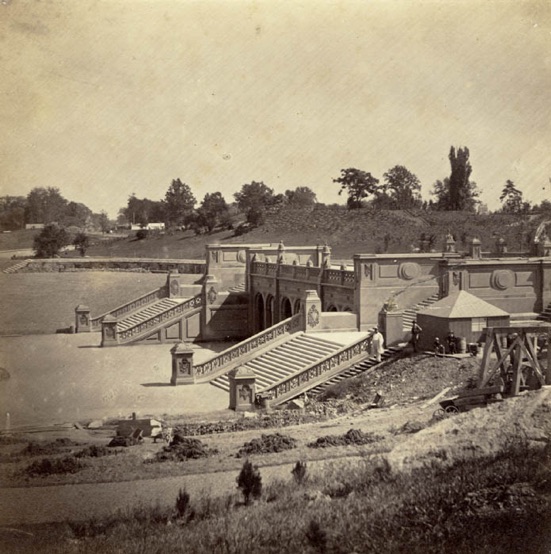
- Edition: 1st
- Available in: Paperback | 66 Pages
- ISBN: 978-0-578-49110-3
In the late 19th and early 20th century Peter Lamborn Wilson hosted The Moorish Orthodox Radio Crusade on WBAI-FM in NYC, where he would read his essays as “Radio Sermonettes.” One of these, “Utopian Trails in Central Park,” was thought lost until the publisher of Logosophia found some tapes he had made of Wilson’s shows. Utopian Trace contains this essay, with Wilson’s on air running commentary (in a green font), extensive updated notes (in maroon font), and dozens of period and contemporary illustrations.
Taking as his springboard a lengthy letter Frederick Law Olmsted wrote to a friend in 1852 (quoted in full), detailing his visit to the North American Phalanx in New Jersey, a community founded on the aesthetic and utopian principles of Charles Fourier, Wilson imagines what Walter Benjamin’s essay “Central Park” would have been if it had been about NYC’s Central Park.
“Actually, Central Park would have provided a perfect subject for Walter Benjamin, as a setting for his hero, the flâneur, or “aimless stroller,” as an emblem of the emergence of commodity culture, as an echo or embedding of utopian dreams. Walter Benjamin loved Charles Fourier, both for his utopian socialism and his proto-surrealist panache. Did Benjamin know that Frederick Law Olmsted, the chief architect of Central Park, had been influenced by the wave of Fourierism that swept America in the 1840’s and 50’s? Had he guessed that Central Park was meant as an embodiment of this enthusiasm?”

Review by Ed Sanders:
In the late 1990s and early 2000s Peter Lamborn Wilson hosted a radio show on WBAI-FM in New York City. The publisher of Utopian Trace had saved some tapes of Wilson’s radio show, one of which contained the broadcast of this paper, and gave them later to Wilson for his archives. It turned out that the broadcast featuring Utopian Trace had been lost. But, now found, it inspired the publication of this remarkable book.
The result is a kudos-proclaiming celebration of New York City’s great and glorious Central Park, and those who created it, especially Frederick Law Olmsted, whom Wilson calls “a hero of the people.” In elegant, pulsing, yet economically descriptive sentences, Wilson presents and comments upon, a lengthy letter Olmsted wrote in July 1862, describing a visit to the North American Phalanx in New Jersey, an intentional community founded upon the aesthetic communitarian theories of Charles Fourier.
This well-designed and well-written book deserves to be savored for its value as an artistic object and as a history itself. Its design features interesting multi-color use of fonts, and what they would call fine “production values” if it were a stage presentation, instead of a visual account of a radio talk. Kudos to Wilson, the publisher Logosophia, and to the great Central Park.
Ed Sanders is a poet, historian and composer. His most recent book is
Broken Glory—The Final Years of Robert F. Kennedy, illustrated by Rick Veitch.
Charlie Says, a movie in good part based on his book about the Manson group,
had its American premiere at the Tribeca Film Festival in 2019.

